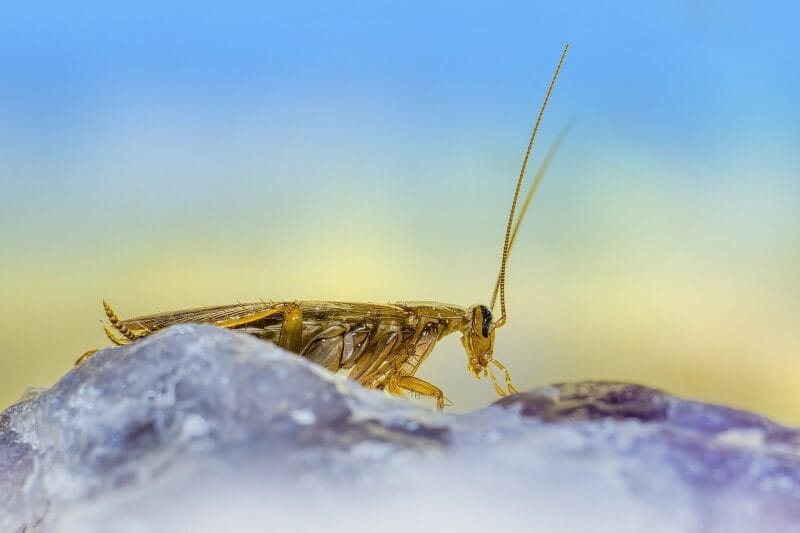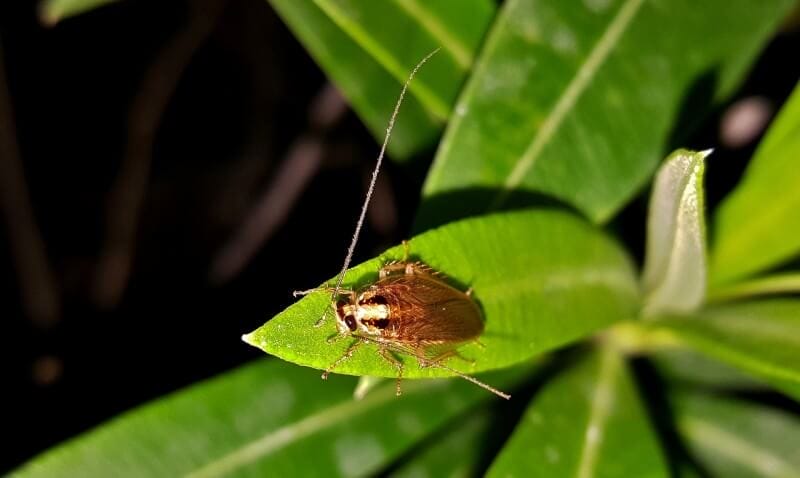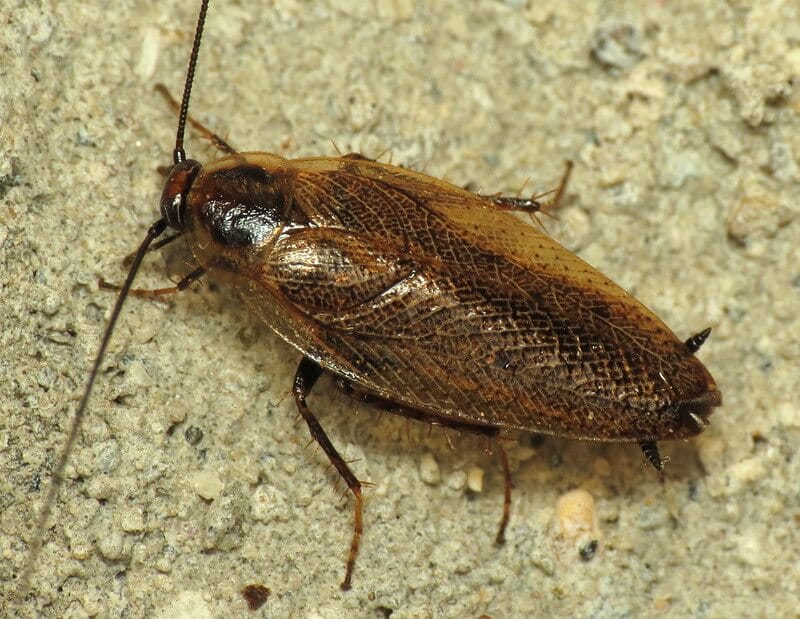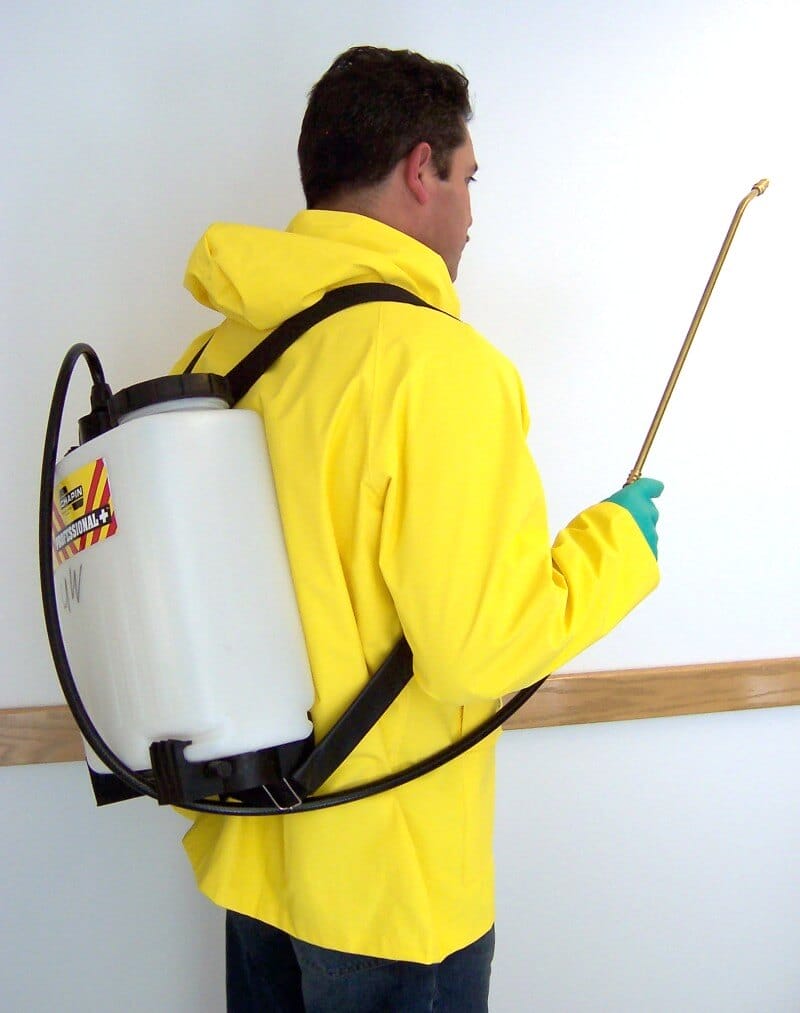Cockroaches are among the most common household pests. Besides being pervasive nuisance creatures, roaches pose a significant health risk. And while there are an estimated 4,500 roach species worldwide and at least 70 in the U.S., some roaches are more prevalent than others.
That said, if you have seen roaches in your home or business, they are probably German, American, Oriental, or brown-banded cockroaches.
The German cockroach is the most common and widely distributed pest. It is common in homes, hotels, apartments, and other food-handling institutions.
This article will discuss everything you need to know about the German cockroach, including what they look like, their origin and life cycle, where they hide and live, their nesting habit, and how to prevent and get rid of a German cockroach infestation. Keep reading.
German Cockroach Identification
Among the 70 cockroach species found in the United States, the German cockroach is the most common cockroach species. This prevalence can be attributed to the small size that allows it to enter homes through tiny cracks and crevices and develop resistance against most insecticides.
German cockroaches can grow up to ½ inch in length and are usually dark to light brown with two parallel stripes on the back of their heads. In addition, this species has wings but is not capable of flight. German cockroaches can also be identified by their long, wide, oval, flat bodies.
Eggs
The German cockroach eggs are usually in an egg capsule and are carried by the female. These egg casings, also known as the ootheca, can be seen from the rear end of the female German roach.
The ootheca usually contains at least 40 eggs and can measure 5/16 inches in length, 1/8 inches in height, and 5/64 inches in width. In addition, if the ootheca gets separated manually or exposed to an insecticide, the egg casing won’t hatch unless it is at least one day from its hatching time.
Nymph
The German cockroach nymphs are white when hatched; however, they will turn dark brown after a few hours. After that, the nymph will look like tiny versions of adult German cockroaches with no wings. Finally, the nymphs will molt at least five times to become adults. The stage between molts is referred to as an instar.
Adult
The adult German cockroach can easily be identified by its light to dark brown complexion and two parallel lines behind its head. The male German cockroaches are slightly smaller than the females, who are bigger with a broader abdomen.
Origin and Distribution

The German cockroaches were thought to originate from Europe; however, recent studies have suggested that they are native to Southeast Asia. This roach species is found in habitats across the world in association with human settlements.
Moreover, German cockroaches cannot survive in extremely cold areas. Apart from cold temperatures, food, water, and harborage are some factors that can limit German cockroach survival.
That said, if you have German cockroaches in your home, the chances are that they hitchhiked in boxes, suitcases, or used appliances and furniture. Besides, if you live in a warm area, they might have entered your home from nearby homes or apartments.
Life Cycle

Regarding breeding, German cockroaches are the most prolific breeders among US roaches; they can breed up to six generations in one year. This means that controlling German cockroaches can be hard.
The lifecycle of a German cockroach consists of three stages: egg, nymph or larva, and adult. This cycle takes at least three months to complete. First, the female roach produces eggs and carries them in an egg capsule until they are almost ready to hatch.
The ootheca can have 30 to 40 eggs and will hatch in about 28 days. It is vital to note that female German cockroaches can produce as many as five egg capsules at room temperature. After incubation, the nymphs hatch and will take at least 103 days to become adults. During this developmental stage, the nymphs will undergo at least seven instars in 65 days for males and 60 for males.
The average life span of the female German cockroach is 200 days or at least 29 weeks.
Habitat and Behavior

German cockroaches prefer to live in moist and warm environments. They are scavengers and primarily feed on various foods. They can eat sweet, greasy, and protein-rich foods in the garbage and inside houses. These roaches can also feed on pet food, book bindings, glue, soap, toothpaste, and leather in case of a heavy infestation.
German cockroaches are nocturnal pests and can be found hiding in your house’s cracks, voids, and any other dark corner. Inside homes, they can be seen at night in the kitchen, bathroom, dining areas, around the stove, near the fridge, and any other places with food and water.
How Do German Cockroaches Enter Homes?

German cockroaches enter homes from any opening or gap they can find. And while they can thrive in most environments, they cannot withstand extreme cold. So, they enter homes searching for food, warmth, and water. Moreover, they can move into your home through drain pipes.
Once inside homes, German cockroaches hide in cracks almost invisible to the human eye. German cockroaches prefer warm areas and can be found around heated areas.
Signs You Have German Roaches in Your Home

There are easy ways to tell whether you have a German cockroach infestation. Identifying any of the following signs may require the help of a pest control expert.
Droppings
German cockroach droppings resemble coffee grounds or ground pepper and can be found on countertops, drawers, or kitchen cabinets. These droppings can also leave dark stains on surfaces.
Unpleasant Smell
Another sign of a German cockroach infestation is a musty, oily smell. This smell can be attributed to their pheromones, food crumbs, dead insects, and other organic matter they leave behind in your home.
Read More: How Do You Get Rid of the Cockroach Smell?
Dead and Live Roaches
Roaches are social creatures, so finding even one alive or dead roach in your home means there are more.
On the other hand, seeing a cockroach during the day could indicate a significant roach problem because these creatures are nocturnal.
Are German Cockroaches a Cause for Concern?

Yes, German cockroaches are a cause for concern.
German cockroaches produce odorous secretions that might affect food flavors. Moreover, in case of serious infestation, this smell can become strong and affect the typical smell of your home. In addition, German cockroaches carry disease-causing germs, pathogens, and viruses. They can cause diarrhea, typhoid, cholera, and dysentery.
Additionally, a German cockroach infestation can ruin your business reputation if you run a food handling business, as they can contaminate food prep areas.
Read More: Get Rid Of Roaches From Your Restaurant
German cockroaches can also trigger asthma attacks and other allergic reactions in sensitive individuals. Some of the allergic reactions that sensitive people might experience include skin rashes, swollen eyelids, itchy skin, and respiratory conditions.
In addition, in case of a severe infestation, available food might be too small to sustain roach colonies, and German roaches can bite in pursuit of food. These roaches can nibble on your toe, nails, and skin. In babies, roaches can be drawn by the smell of milk or food around their mouths.
It is vital to note that German cockroaches bite rarely and are not venomous. However, German cockroach bites might result in secondary infections. Bites appear as tiny, red patches and might even form a scab.
How to Get Rid of German Cockroaches

There are various ways to eliminate cockroaches in your home. But first, you must identify the problem and confirm that you are dealing with German roaches.
Next, clean the area by removing any food and water sources attracting the roaches. Vacuum food particles, get rid of clutter, store food safely in airtight containers and clean the surfaces with dish soap. Also, repair any leaking water pipe, and empty your fridge’s drip pan. It is also crucial to clean pet food bowls and any spilled drinks immediately. Don’t leave dirty dishes in the sink.
If you have tried everything, but the roaches are still coming in, it might be time for professional help. Pest control companies can use dust or spray insecticides for roaches to target the German cockroaches effectively. They will also help prevent future infestations.
Frequently Asked Questions
Why Are German Roaches in My House?
German roaches are in your house because they hitched a ride on your belongings, used furniture, and grocery bags or cardboard boxes. They might also be in your home because your neighbor has a heavy infestation. These roaches can invade your home if food or water sources draw them in.
Is It Hard to Get Rid of German cockroaches?
Yes, it is hard to get rid of German cockroaches sometimes.
German cockroach control can be challenging because they are prolific breeders known to develop insecticide resistance. Besides, they can alter their normal behavior to adapt to any environment. Luckily, you can get rid of them with the help of a pest control expert.



